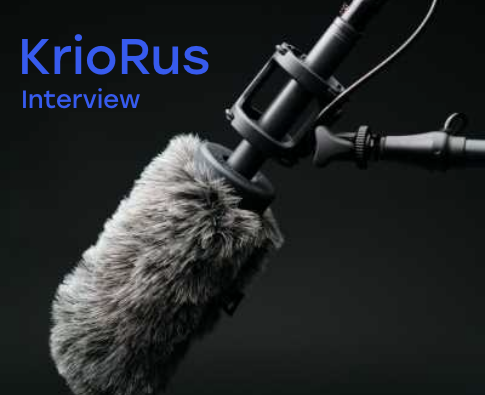There are few medical advances over the past few decades more exciting than the field of stem cell research. That’s because stem cells are foundational cells that can be encouraged to develop into different specialized roles depending on the needs of a particular treatment. The potential applications of stem cell therapy are wide-ranging, and it has already been successfully used to treat a variety of health conditions, including multiple sclerosis.
Stem cell research began in the early 1980s with experiments on mouse embryos, before taking off in earnest in the late 1990s and early 2000s as methods were developed to derive and grow stem cells from human embryos. Progress in the field has been steady over the past two decades, and it’s becoming clear that stem cell therapy is much more than just theory or hype. It offers real, increasingly practical treatment for a variety of afflictions, and that makes it appealing for both patients and investors looking to support an emerging medical science that can actually back up its claims.
A growing industry
Stem cell research, services, and associated therapies represent one of the fastest growing sectors of the overall healthcare industry. According to BIS Research, the global stem cell therapy market is expected to grow at a compound annual growth rate of 27.99% between 2019 and 2029 and could reach $11 billion by 2029. After decades spent mostly in the lab, stem cells therapies are breaking out into the real world in a big way.
Many stem cell companies experienced a bump in stock price during the COVID-19 pandemic as part of a larger trend that impacted companies across the healthcare industry. As investor excitement swirled around companies that could potentially be involved in solving the global health crisis, stock prices went up. But as of the end of Q1 2021 some of that influx of investor money has now been withdrawn. Keep the COVID factor in mind when reviewing the recent financial performance of any medical research company.
Some stock volatility is to be expected in any emerging market, and is no real cause for concern in most cases for stem cell companies. Investor interest surges because people know there is a huge upside for companies in this field. While stem cell treatments have yet to emerge as the “magic bullet” that brought the end of the COVID-19 pandemic into sight, they were instrumental in the testing of several treatments for the disease.
Stem cell therapies and technologies are widespread and show promise throughout the medical field and companies working with stem cells are going to continue to make headlines in major health breakthroughs in the future. There’s little doubt that the long term outlook for the stem cell therapy industry is bright – even if picking the right specific company that will drive the next big breakthrough remains a challenge for investors.
Three stem cell companies to watch
To serve as an introduction to the types of financial opportunities available in the stem cell field, here’s a look at three NASDAQ-traded medical companies pushing the science in different directions. You can consult recent articles from Investing News and The Niche for more companies in the stem cell therapy industry that are worth a closer look.
Sangamo is one of the largest and most valuable companies in the $9.38 billion stem cell industry. According to the company’s Yahoo Finance page, it has a market cap of $1.75 billion, and MarketBeat’s roundup of analyst recommendations have had the company’s stock as a “Buy” over the past six months, though a minority of analysts have labeled it as “Hold” instead.
The company focuses on a variety of gene therapies, and has used stem cell-derived technologies to begin researching treatments for conditions including inflammatory and autoimmune diseases. Most of Sangamo’s therapies are in various stages of clinical trials, and the company has shown steady progress with the application of its flexible core technology. On the stock front, Sangamo underwent a dip in March of 2021 that was noticed in the financial press. But analysts writing in Forbes and other publications expressed expectations that the downturn would be minor and temporary.
Athersys has a market cap of around $338 million, and it’s been a solid “Buy” across the board from analysts. The company specializes in a proprietary technique called “MultiStem,” which involves taking stem cells from inside healthy bone marrow and replicating those cells outside the body. The resulting cells can then be given to patients via intravenous infusion.
Athersys is carrying out clinical trials and seeking full FDA approval for MuliStem. The company’s research indicates that the introduction of its stem cells into a patient’s body “can express a range of therapeutically relevant proteins and other factors” that could treat conditions like inflammation, aid in the recovery of damaged tissues, and help grow new blood vessels.
Though it’s currently a “penny stock,” Athersys was one of the stem cell therapy companies to experience a stock boost during the height of the COVID-19 pandemic. MultiStem showed promise in the treatment of acute respiratory distress syndrome (ARDS), the most common cause of death brought on by COVID. The most recent news on the associated clinical trials comes from September 2020 as the trials got underway, so it remains to be seen whether the results justify the initial excitement.
Vericel (known as Aastrom Biosciences prior to 2014) has shown steady and impressive stock growth over the past few years. It has a market cap of $2.5 billion and is generally rated a “Buy” from analysts. The company’s most prominent product, the FDA-approved MACI treatment for repairing knee cartilage. It isn’t technically a stem cell therapy since it uses a patient’s existing cartilage cells to create new cells, rather than starting with stem cells. But the company has been working with stem cells for decades now, and is a good example of the way stem cell sciences often interact with other forms of treatment, especially in the larger “cell therapy” world.
Vericel’s stock price made news in March of 2021 after soaring 13% in a single day, following the announcement by S&P Dow Jones that the company would become a component of its S&P SmallCap 600 index. With years of growth behind it, FDA-approved treatments on the market, and a higher prominence thanks to its inclusion in the new index, there’s no sign that Vericel’s stock price will be coming down anytime soon.
Stem cell therapy market outlook
The healthcare industry as a whole is still settling down after the dramatic upheaval of the COVID-19 pandemic and the long-term outcomes of that crisis aren’t yet clear. It remains to be seen if any companies in the stem cell sector emerge as key players in the continuing fight against COVID and its longer-term effects. Even if that’s not the case this time, we can expect stem cell therapies to be among the cutting edge treatments helping people live longer, healthier lives in the coming decades – and that represents an opportunity for informed investors.
Eric Volkman (2021): Why Vericel Stock Raced 13% Higher on Thursday | NASDAQ
Grand View Research (2021): Stem Cells Market Size, Share & Trends Report, 2021-2028
Investing News (2020): 10 Top Stem Cell Companies on the NASDAQ
Micaela Marshall (2020): Cleveland Biotech Company Holding COVID-19 Clinical Trials | Spectrum News
The Niche (2021): 24 cell therapy & stem cell stocks I’m following
University of Nebraska Medical Center: History of Stem Cell Use
Vericel Corporation: Aastrom Biosciences Changes Name to Vericel Corporation















